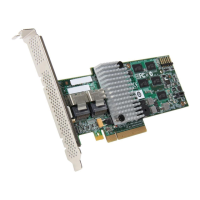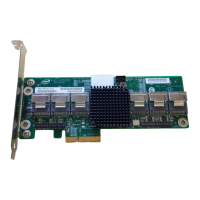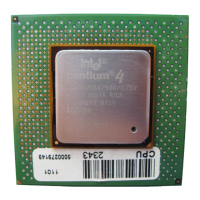24 Intel® RAID Controller RS2WG160 Hardware User’s Guide
Fault Tolerance
Table 9. Fault Tolerance Features
Electrical Characteristics
All power is supplied to the Intel
®
RAID controller RS2WG160 through the PCI Express
3.3V rails and the 12V rail. Onboard switching regulator circuitry operating from the 3.3V
rails and the 12V rail provide the necessary voltages. The following states determine the
typical current consumption of the controller:
• State 1: During a consistency checks of all RAID 5 virtual drives at one time
• State 2: While sitting idle at the DOS prompt
Cache options • Write-back or Write-through
• Read Ahead
• Adaptive Read Ahead
• Non Read Ahead
• Cache I/O or Direct I/O
• Disk Cache
Specification Intel
®
RAID Controller RS2WG160
Specification Intel
®
RAID Controller RS2WG160
Self Monitoring Analysis and
Re
porting Technology (SMART)
support
• Detects up to 70% of predictable disk drive failures
• Monitors the internal performance of all motors, heads,
and drive electronics.
Optional Battery Backup
• Intel
®
RAID Smart Battery AXXRSBBU7 cache backup
• Up to 48 hours of data retention, ‘Gas Gauge’
Drive Replacement
• Auto detection of failure
• Hot-plug
• Hot-swap
Drive Rebuild Using Hot Spares
• Automatic at fail
• Dedicated per Array
• Global for any array
• Auto-resume of initialization or rebuild on reboot
Error Checking and Indication
• Parity generation and checking, automatic consistency
checking
• Patrol reads
• Activity and fault LEDs
• Multiple retries
• Logs in NVRAM, event log, CIM, Smart, Intel
®
RAID
Web Console 2

